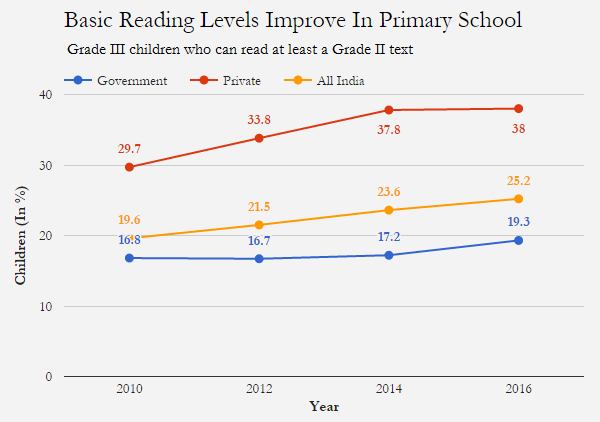Private education could cost 2-3% more if taxed at the lowest slab of 5% under the Goods and Services Tax (GST), according to our analysis of the bill’s provisions.
The GST bill passed by the Lok Sabha (lower house of Parliament) on March 29, 2017 carries a provision that says certain services provided by the government or local authority would not be liable to tax.
Financial experts believe that the provision was inserted to exempt education and health services, in addition to a list of other services, when provided by the government or the local authority.
The provision could be extrapolated to mean that private education in India would be liable to tax once GST becomes law.
Tax exemptions have been granted to both public and private institutions engaged in providing education. Extending exemption benefits to private schools, considering their commercial success, has not always been an idea that found mass support.
“Charitable purpose”, as defined by law, includes relief to poor, education, medical relief, and the advancement of any other object of general public utility. The words “not involving the carrying on of any activity of profit” were omitted by the Finance Act, 1983.
Continuing in the same vein, a circular was issued by the Central Board of Direct Taxes in 2008, clarifying that an institution providing relief to the poor, education and medical facilities, would be allowed exemption even when it has incidental commercial activities.
The GST regime is now set to disrupt the status-quo, including educational activities.
GST is an indirect tax–a tax on consumption of goods and services. An inherent feature of indirect tax is that the burden of the tax, rather than being borne by the industry (i.e., the manufacturers or traders or service providers), is passed to the consumers.
So, GST on private education, if it is implemented, would be borne by those looking to avail education services. Therefore, the issue of whether education is the place for disruptions, which might otherwise be a good thing, merits consideration.
Education, once viewed largely as a philanthropic activity, has now metamorphosed into a $100 billion (Rs 6.5 lakh crore) industry, with the private sector balancing investor returns and social responsibility, while the public sector is struggling with inadequate faculty and outdated curriculum.
Lessons from Greece
Greece, for instance, imposed a 23% value added tax (VAT) on private educational establishments in 2015.
“It looked like a double win that would simultaneously please creditors and demonstrate the government’s commitment to helping the underprivileged. Unsurprisingly, it did neither”, The Economist reported on October 30, 2015.
Within months, reasonably priced private schools were forced to shut down. Those who suffered as a consequence were not just the rich but also middle and lower-income groups.
Private schools located in working class areas charged affordable tuition fees and attracted working class parents who were keen their children receive a good education. The VAT also strained an already overheated state education system.
Many Indians too prefer private schooling
In India, as in Greece, the demand for private schooling is not just reflective of elite preferences but also a show of trust in affordable private schools, thereby making the demand cut across income spectrums.
For instance, about 31% of children in India in 2015-2016 were enrolled in private schools, while about 11.5% were enrolled in private institutions partly aided by the government, according to data from the Unified District Information System for Education.
Even in some poorer states such as Uttar Pradesh (51.37%) and Rajasthan (49.23), half of all children enrolled were in private educational institutions.
Further, private school enrollment is not only an urban phenomenon. In rural areas of Madhya Pradesh 24.7% of students aged 6-14 years were enrolled in private schools, as were 52.1% in Uttar Pradesh, according to data from the 2016 Annual Status of Education Report.
Private schooling, in several parent’s minds, has come to be associated with quality, with some low-income families enrolling their children in private schools, which suggests that a tax on education could be regressive in nature.
Though parents believe private schools offer higher quality education, government schools in some states have also improved over the last two years, IndiaSpend reported on January 18, 2017.
Further, a 2014 study suggested that children who study in private schools were more likely to have educated parents (which could result in better learning outcomes), have fewer siblings and thus receive more parental attention, and be part of families richer than those who study in government schools.
Source: Annual Status of Education Report, 2016
If the government chooses to tax private education at the lowest slab rate (about 5%), while also considering the tax already paid on inputs such as furniture and services (like rent), the effective tax rate would be even lower.
Careful framing of the law, i.e. the rate of tax and allowance of input tax credit with respect to education, could mitigate the impact of taxing education, and result in an increase in cost of education to the consumer by just about 2-3%.
(Pardikar is a chartered accountant based in Bengaluru.)
Reprinted with permission from IndiaSpend.org, a data-driven, public-interest journalism non-profit organisation. You can read the original article here

